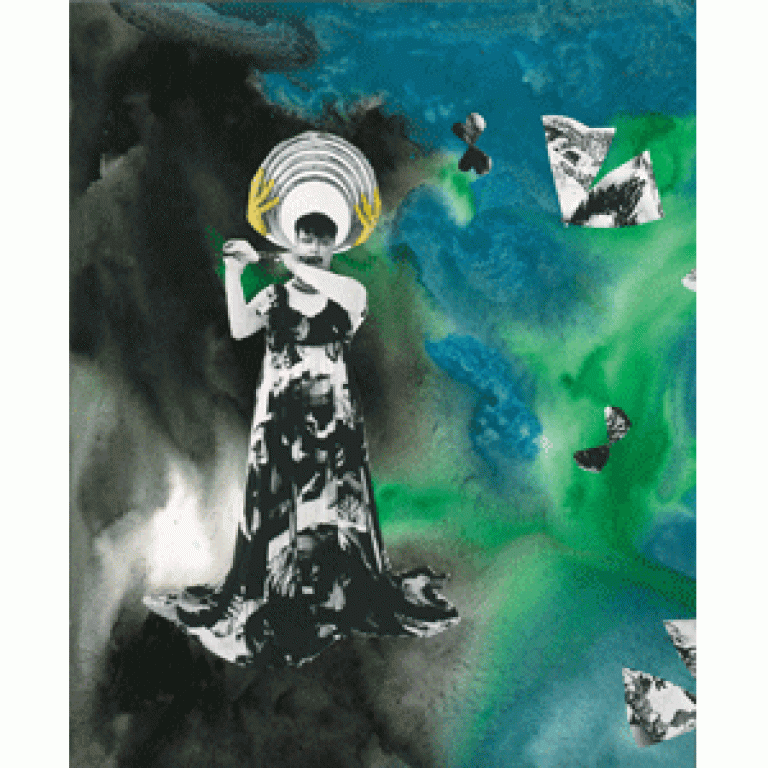Slade alumni go Altermodern for Tate Triennial
30 January 2009
Links:
 ucl.ac.uk/slade/" target="_self">UCL Slade School of Fine Art
ucl.ac.uk/slade/" target="_self">UCL Slade School of Fine Art
Five out of the 20 artists selected for the upcoming fourth Tate Triennial are graduates of the UCL Slade School of Fine Art.
The much- publicised Altermodern exhibition features work by UCL alumni Spartacus Chetwynd, Matthew Darbyshire, Tacita Dean, Katie Paterson and Lindsay Seers.
This selection of new contemporary art presents some of the best that current British art has to offer, alongside international artists who are working with similar themes. It includes artists working in all media, including painting, film and installations. This year's Triennial has been curated by Nicolas Bourriaud, who is proposing the new art term 'Altermodern' to describe how artists are responding to the increasingly global context in which we all now live. Altermodern claims that the period defined as postmodernism has come to an end and a new culture for the 21st century is emerging.
Spartacus Chetwynd specialises in performance art featuring outlandish and humorous costumes and scenarios, with references to celebrities. Spartacus is always a participant in her productions, dressing up as a bikini-clad temptress for her 'Evening with Jabba the Hutt' or prancing round as a eunuch in her homage to Meat Loaf. She also stages her annual film event Spanky Chaffinche's Film Festival at London's Studio Voltaire.
Matthew Darbyshire's recent installation, 'Blades House' was a full-size apartment for a fictitious urban middle-class professional in his mid-30s, which highlighted the tenseness created by the friction between consumerism and a strive for individuality.
A Turner Prize nominee, Tacita Dean is most well known for her films, which reference other art forms, especially painting. Tacita's work seeks connections between past and present, fact and fiction. She maps not just the objective world but also our private worlds and traces the complex interaction between the two.
To take her photographs, Lindsay Seers transforms her body into a camera. She engulfs herself in a lightproof, black bag and places a precut coloured negative at the back of her mouth. Using a dark gummy shield positioned with a pinhole in the front of her mouth, Seers snaps a photograph using her lips or hand as the shutter. The subject matter being sometimes creepy and disconcerting, she has compared herself to a ventriloquist's dummy and a vampire.
Two works from Katie Paterson's graduate show have captured the public imagination. For 'Vatnajökull', she displayed a mobile phone number in neon lights. She had installed a microphone and transmitter deep inside an Icelandic glacier. Callers to the number could hear cracks, gushes and gurgles - the sound of the glacier melting. For 'Earth-Moon-Earth (Moonlight Sonata Reflected from the Surface of the Moon)', she translated the sonata into Morse code, 'bounced' it off the moon by radio transmission and, using the echoes, retranscribed the broken score to recite on a grand piano. In 2008, she won the Creative 30 award. For Altermodern, Katie has created a map of 27,000 dead stars in the universe.
Professor Ofer Lahav, Head of UCL Astrophysics and renowned cosmologist, has been helping Katie with her dead stars map. Professor Lahav's own research involves creating maps and surveys of stars, galaxies and dark matter. A short film of Katie and Professor Lahav at the University of London Observatory will be shown on the 'Tate Shots' website. Professor Lahav is also giving a lecture about the project at 'Late at Tate'.
Altermodern, the fourth Tate Triennial, will be on at Tate Britain, Millbank, London, SW1P 4RG from 3 February - 26 April 2009.
To find out more, use the links at the top of this article
Image: Hermita's Children TV Pilot (promotional material) by Spartacus Chetwynd, 2008 © the artist
 Close
Close

